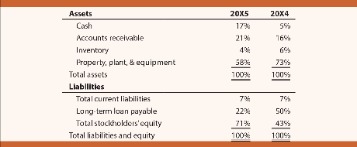Organizations may use spreadsheets or enterprise resource planning (ERP) tools for asset tracking. It can also be a slow method for staying on top of fixed asset inventory, when fleets of vehicles are moved between locations or the technology is complex. Problems with fixed asset management are often flagged up during audits which organizations can fail if they don’t have a good system in place.

Tangible assets are subject to periodic depreciation while intangible assets are subject to amortization. The asset’s value decreases along with its depreciation amount on the company’s balance sheet. The corporation can then match the asset’s cost with its long-term https://kelleysbookkeeping.com/best-accounting-software-for-ecommerce-in-2021/ value. The operations/asset manager responsible for fixed asset management selects the assets that should be tracked. Naturally, based on the organizational structure, there will be other personnel to support and execute asset maintenance plans and programs.
Benefits of Fixed Assets
The acquisition or disposal of a fixed asset is recorded on a company’s cash flow statement under the cash flow from investing activities. The purchase of fixed assets represents a cash outflow (negative) to the company while a sale is a cash inflow (positive). If the asset’s value falls below its net book value, the asset is subject to an impairment write-down. This means that its recorded value on the balance sheet is adjusted downward to reflect that it is overvalued compared to the market value. Accurately tracking, controlling, and depreciating assets is required in all businesses. The Fixed Assets Management SuiteApp provides a single source of information for everything relating to that asset.
- They usually relate to infrastructures such as buildings, lands or machinery, meaning that they’re not assets sold directly to customers.
- Fixed assets have a long life expectancy and often require big capital expenditure.
- This service enables you to conduct comprehensive and cost effective physical audits and ensure an efficient inventory management.
- It can also be good for keeping account of the incident for insurance reasons.
- A fixed asset management solution can tell you when equipment can become outdated, or when vehicles need routine maintenance that can save you costly repairs in the long run.
- The predictive maintenance market size is expected to grow from $4.2 billion in 2021 to $15.9 billion by 2026.
It is best to record these items in the central asset register to maximise effective control and utilization. Fixed assets have a long life expectancy and often require big capital expenditure. Efficient management of the assets is required to eke out the maximum output from your fixed assets. Assets that have become unusable or don’t even physically exist, but are still listed in your fixed asset register, are referred to as ghost assets. This is important if you use company property outside of your business or you open a second business location. However, even if the number of fixed assets you currently own is limited, your company may have plans to add new assets in the coming year.
Fixed Assets vs. Current Assets
Ideally, the software should also automate financial processes such as depreciation, either by embedding these capabilities with the software or by integrating with a company’s accounting system. A company’s balance sheet statement includes its assets, liabilities, and shareholder equity. Assets are divided into current assets and noncurrent assets, the difference of which lies in their useful lives. Current assets are typically liquid, which means they can be converted into cash in less than a year.
Fitch Assigns Expected Ratings of ‘BB(EXP)’ to Griffin Global Asset … – Fitch Ratings
Fitch Assigns Expected Ratings of ‘BB(EXP)’ to Griffin Global Asset ….
Posted: Mon, 22 May 2023 16:45:00 GMT [source]
Keeping records remotely means that information can be shared instantly, accountability checks can be made and search functions are more accessible. There are significant benefits to utilizing fixed asset management practices. Asset tracking software is often used to track both the information about an asset for financial reporting purposes as well as the physical location of an asset. The financial reporting elements of tracking often relate to accounting procedures and valuation needs but may or may not relate to location information. To put it into perspective, consider this scenario where your organizations owns vehicles.
What is Fixed Assets Management?
A fixed asset is a long-term tangible property or piece of equipment that a company owns and uses in its operations to generate income. These assets are not expected to be sold or used within a year and are sometimes recorded on the balance sheet as property, plant, and equipment (PP&E). Fixed assets are subject to depreciation, which accounts for their loss in value over time, whereas intangible assets are amortized. Fixed assets are often contrasted with current assets, which are expected to be converted to cash or used within a year. Fixed asset management software helps companies track assets over their entire life cycle, from initial acquisition to sale or disposal.

To avoid this, you can check the current status of fixed assets on a dashboard calendar in fixed asset software. Tracking the depreciation of all your fixed assets is one of the most important components of fixed asset management. According to the ISO international standard, asset management should maximize value for money. Ideally, fixed asset management improves the quality and useful life of equipment and ensures the best return on investment. If the car is being used in a company’s operations to generate income, such as a delivery vehicle, it may be considered a fixed asset.
What Is Fixed Asset Management?
Some tracking methods automate the process, such as by using fixed scanners to read bar codes on railway freight cars or by attaching a radio-frequency identification (RFID) tag to an asset. Explore the full asset management spectrum and which choices are the right ones. Implementation, without a proper tracking methodology, is a waste of effort, time, and capital. A fixed cost is a business cost that remains constant regardless of the quantity of goods or services produced.
What are 4 examples of fixed assets?
- Land: Land used for business operations is a fixed asset.
- Buildings and factories:
- Furniture and fixtures:
- Leasehold improvements:
- Computer hardware, software and office equipment:
- Vehicles:
- Machinery and equipment:
- Tools:
If so, it might be wise to start looking for an EAM solution because it’s better to be ready once the need arises. And since fixed assets are vital to both day-to-day operations and achieving long-term goals, having a reliable way to ensure that the assets are always secure and maintained is a top priority. The best asset management software also tracks What Is Fixed Asset Management parts, tools and other supplies that leave the warehouse. With barcoding, this system controls all of the billing related to it in one place. Managing different types of assets is one of the greatest difficulties for asset-intensive firms. Fixed asset management software eliminates the need for a backlog of management chores that can stifle productivity.
